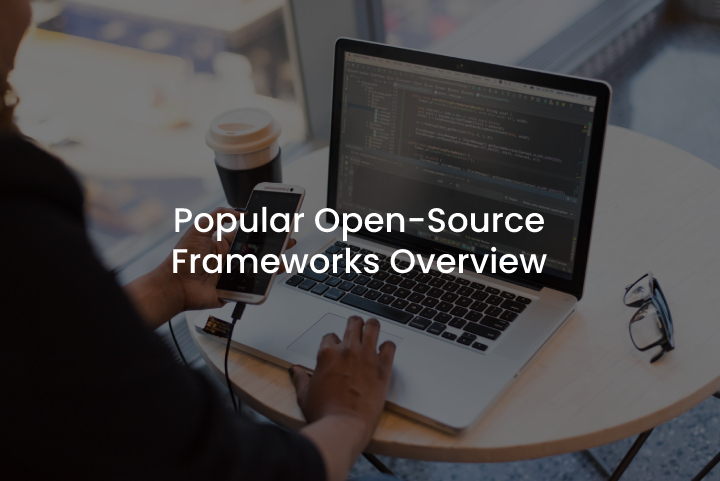Implementing Data Analysis for Operational Optimization and Increased Business Performance
Businesses today have access to more data than ever before, from customer transactions and interactions to operational metrics and financial …
 28 | 07 | 2022
28 | 07 | 2022 Smartphones are becoming an indispensable component of our regular activities. They are not only efficient but also simple to use, which is why businesses are putting a lot of emphasis on corporate mobile strategy. Consequently, apps are undoubtedly an important part of the strategy for advertising your company and reaching a wider audience. There are many ways to advertise your company, and mobile applications have become a popular option. In this article, we will go through the basic technologies around creating mobile apps and dive into the hybrid side.
A hybrid mobile app combines native and web app technologies. Hybrid apps are created in a single language and run across several platforms. There are several sorts of mobile applications to consider for your next mobile app project, including native, hybrid, web, and progressive web apps, and frameworks that help to optimize and fasten the creation process.
A native app is a smartphone application designed exclusively for a mobile operating system (think Objective-C or Swift for iOS vs. Java/Kotlin for Android). The hybrid development approach is based on cross-platform functionality and is designed for a specific platform, either Android or iOS. It offers the benefit of speedier performance and the ability to simply access and utilizes the built-in capabilities of the user’s device (e.g., GPS, address book, camera, etcetera).
In brief, native apps are just that: native to the user’s operating system and hence designed following those requirements.
Pros:
Cons:
Pros:
Cons:
Construct, debug, and release brilliant mobile, web, desktop, and embedded apps from a single codebase. Flutter is a Google open-source framework for creating attractive, natively built, multi-platform apps from a single codebase. For speedy performance on any device, Flutter code compiles to ARM or Intel machine code.
Pros:
Cons:

Ionic is a framework designed specifically for developing complex and powerful mobile user interfaces. The Ionic app development framework, which is constructed with HTML, CSS, and JavaScript, has an excellent command-line interface (CLI), which simplifies the developer’s job and considerably reduces the learning curve. The framework also includes extra services like Ionic View and Ionic Creator. If you wish to improve an app’s functionality, you may combine it with any Javascript framework, including Vue, React, and Angular.
Pros:
Cons:
React Native is an open-source mobile application framework the primary goal of which is to create native apps using JavaScript. It is used to boost productivity and reduce time to market.
Essentially, most users choose to utilize the React Native application since it takes advantage of the platform’s incredibly user-friendly features.
Pros:
Cons:

Xamarin features diverse capabilities and a large range of development tools. Xamarin is a framework for developing cross-platform apps in C# for iOS, Android, and Windows (using UWP).
Xamarin is built on the.NET platform and provides access to the.NET ecosystem of packages and libraries. Interestingly, three of the incredible benefits of utilizing Xamarin include continual developer support, extensive learning opportunities, and complete technical assistance from Microsoft. Work with Xamarin comes in two flavors: Xamarin Native and Xamarin Forms.
| Xamarin Native | Xamarin Forms |
| Xamarin Native allows you to operate at a lower level, making use of each platform’s particular capability. However, if you want complicated animations, you must develop the UI for each platform independently. | Xamarin Forms allows you to create UI for multiple platforms at once, however, some are confined to standard components. |
Pros:
Cons:
Every tool and framework has its benefits and drawbacks depending on the project they are utilized for. With Flutter and React Native providing the most native-like experience, Xamarin providing two alternative app development methodologies, and Ionic providing code quality, the ultimate choice should be decided based on the needs of your project.
Hopefully, this list has benefited you in making your selection and will support you in making all your hybrid app endeavors a reality. If you haven’t decided on the best framework for you yet, consult with your company’s needs to determine which type of hybrid app development framework is best for you.
READ ALSO: HOW UTILIZING ARTIFICIAL INTELLIGENCE IS SHAPING HELPFUL TECHNOLOGIES AND DISCOVERIES
Businesses today have access to more data than ever before, from customer transactions and interactions to operational metrics and financial …
Conversational AI systems can engage in natural conversations and dialogue with humans. Powered by machine learning and natural language processing, …
The decision between hiring a software development company or a freelancer can be challenging for business owners who are looking …